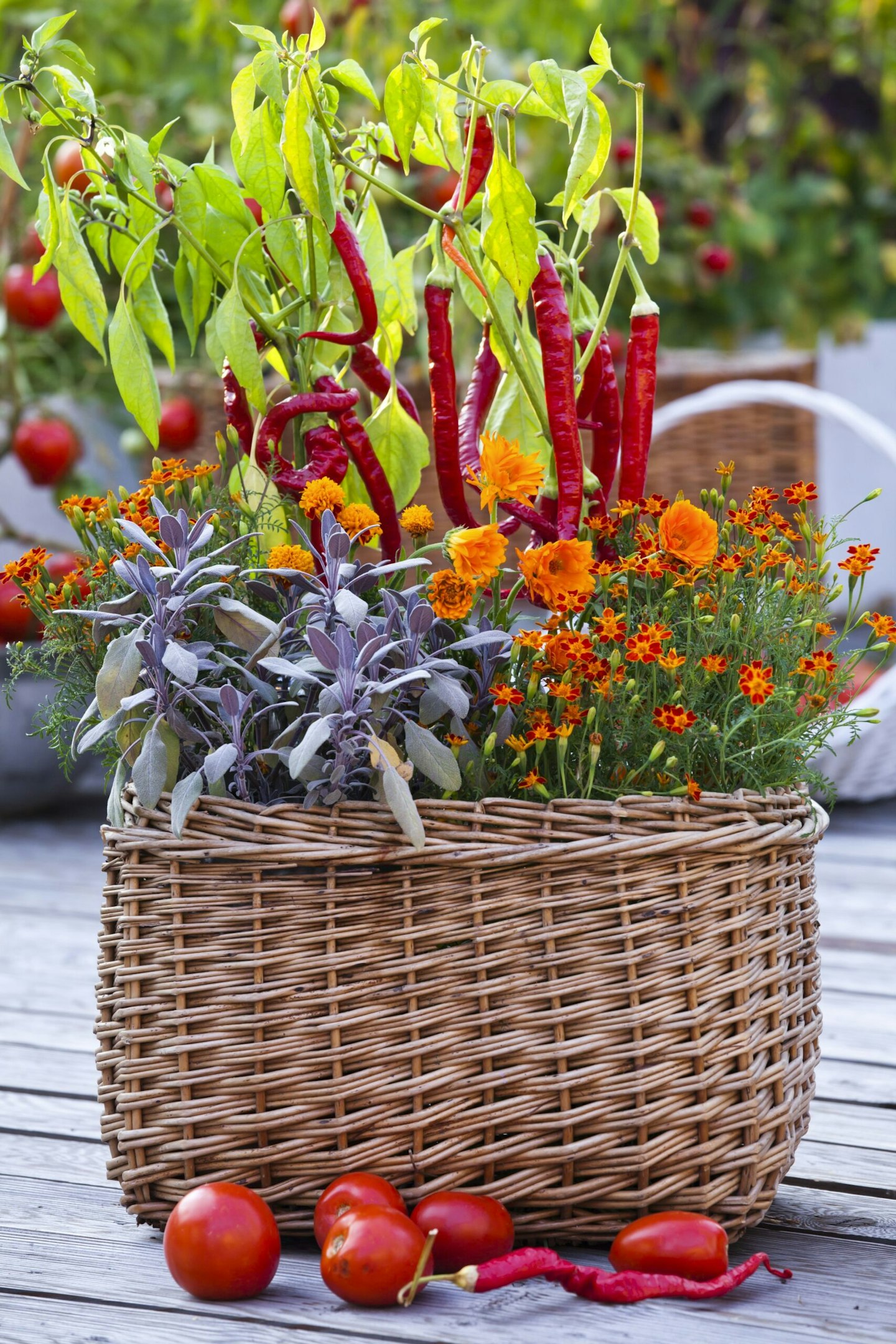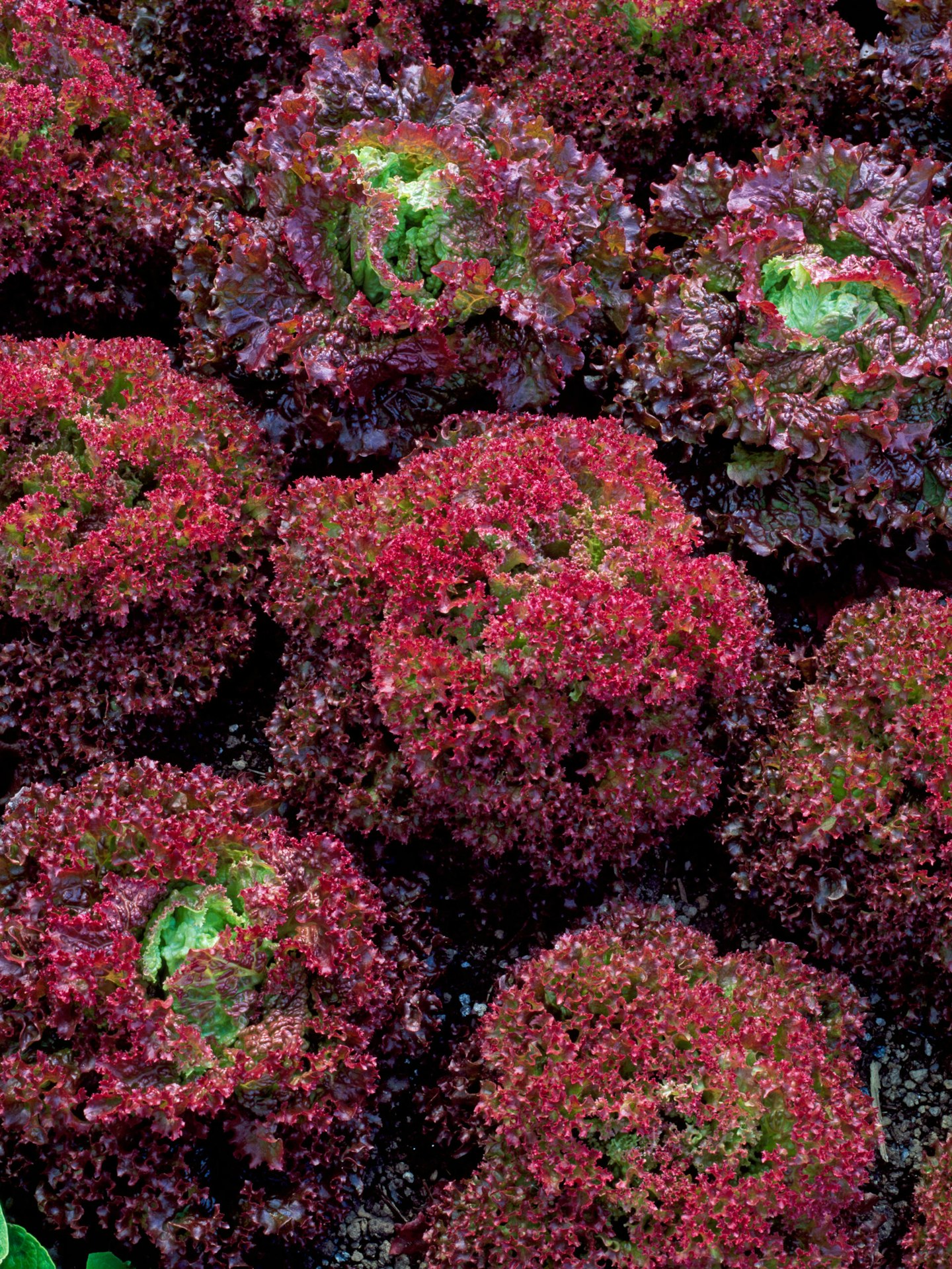In Georgian and Victorian eras, the landed gentry used to hide edibles away in walled gardens, while in more recent times, ordinary folk grew them in dedicated patches tucked away at the very back of their gardens. However, there’s no reason for crops to be raised out of sight. All you have to do is pick vegetables, fruit and herbs that have attractive leaves, stems, blooms or fruit, or boast architectural good looks, and they won’t look out of place alongside ornamentals. Start filling those gaps now and you’ll soon have a patch that’s as gorgeous as it is delicious!
Growing in beds and borders
In the past, many crops were grown alongside flowers in traditional cottage gardens. Take inspiration from our ancestors and fill bare patches of soil in beds, borders and raised beds with attractive edibles. Treat them like any other plants to ensure schemes are easy on the eye. Set low-growing and foliage specimens in groups of 3, 5 and so on, close to the front of the schemes, making sure they have enough space to spread. Use mid-height edibles with striking foliage to lead the eye by threading through beds and place very tall plants with a sculptural form at the back. Tall, slender plants can be grown in place of grasses. For example, sweetcorn makes an interesting alternative to miscanthus. Dwarf, columnar or standard fruit trees will add structure and visual interest.

Pretty potager
A classic French potager – as demonstrated at the Chateau of Villandry in the Loire Valley – is the ultimate ornamental kitchen garden. Consisting of a series of beds edged with lavender, dwarf box hedging or hard landscaping materials, they’re filled with a mixture of vegetables, herbs and fruit alongside ornamentals with edible flowers, such as nasturtiums, violas and daylilies. The aim with a potager is to be creative. Set trailing and compact species around the edges, with taller plants behind. Add vertical interest by growing climbing crops on wooden obelisks. Traditionally, potagers were made using beds in the ground, but another option is to plan one using raised beds divided by paths.

Container displays
If you’ve got a patio, deck or courtyard, give it a tasty lift with a group of crops in pots. Compact fruit trees are ideal, as are herbs. It’s best to avoid veggies that need a long growing season, along with those that reach epic heights as they’ll be forever toppling over in the wind. Instead, pick plants that are fairly short and, if growing root crops, make sure the container is deep enough for them to develop. The choice of containers is just as important as the plants they house. Stone, terracotta, glazed and terrazzo look smart but will need more watering than plastic due to their porosity. For a head-turning display, arrange a selection of containers in different shapes and sizes. Either grow one plant per pot or arrange several in a planter, making sure it includes an upright centrepiece, trailers and bushy specimens to fill gaps.
Perfect plants
There’s no shortage of attractive vegetables, herbs and fruit. Swiss chard is a must due to its muscular form, colourful stems and large, shiny leaves. ‘Bright Lights’ is a vibrant blend of red, white, orange, gold and pink-stemmed varieties topped with glossy green or bronze leaves, while ‘Peppermint’ has dark green leaves held above tall, two-tone pink and white stems.
Kale is an architectural gem. ‘Curly Scarlet’ makes a 1m-tall plant with tightly curled, dark green leaves with red veins and ‘Nero di Toscana’ boasts narrow, bolt upright, dark green leaves that are deeply crinkled.
Lettuces like frilly ‘Lollo Rosso’, red-tinged ‘Yugoslavian Red’ and bronze ‘Dixter’ are great low-growing, foliage plants. Angelica, globe artichokes and cardoon will add vertical interest.
As for herbs, chives are a flowering powerhouse and feathery bronze fennel (Foeniculum vulgare ‘Purpureum’) will add texture. In the fruit camp, blueberries provide three seasons of interest – flowers in spring, fruit in summer and autumn leaf colour. Perpetual strawberries are an obvious choice due to their flowers and shiny, jewel-like berries produced over a long season.

Top tips
• Keep some spare edible plants in the wings to plug gaps if those in displays run to seed or get eaten by pests.
• Veggies will go downhill quickly if they dry out, so water regularly, especially during periods of drought.
• Instead of delineating beds and borders with hedging plants, consider growing edible edges, such as espalier and step-over apple and pear trees.
• When planting annual vegetables in containers use multi-purpose compost. John Innes No.3 is best for fruit trees and No.2 for perennial vegetables.
• Make the most of arches, obelisks and other vertical structures by using them to support climbing crops such as runner beans, courgette ‘Black Forest’, strawberry ‘Everest’, cucamelon and miniature pumpkins.
Enjoying reading this article from Garden News magazine?
Read more like this every week with a subscription to Garden News. Garden News is Britain's most trusted voice in gardening with practical and informative advice features from experts, including Carol Klein. Plus, the step-by-step guides and how to tips and tricks are easy to follow and will ensure your garden is at its best - whatever the weather! View our latest subscription offers
